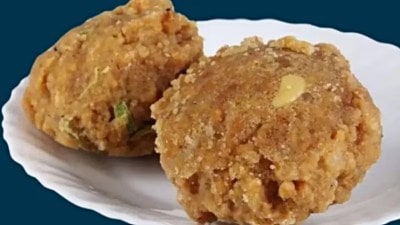Last year, Pritam Singh grew basmati paddy in 107 acres — 30 acres of his own and 77 taken on lease.
This year, he is farming only 90 acres. The reason: crashing prices. In early-November, when harvesting of the 2014-15 crop began, the popular Pusa-1121 variety was selling at Rs 3,200-3,300 per quintal. It fell to Rs 2,600-2,700 by the month-end and remained around that till March, before dropping further.

Today, Pusa-1121 basmati is trading at Rs 2,100-2,200 per quintal. Pusa-1509 paddy prices are even lower, at Rs 1,500-1,600, having ruled at Rs 3,200 at the season’s start — almost the same as Pusa-1121 — and then sliding to Rs 2,000 levels by early-April. “Normally, prices rise towards the season-end when market arrivals reduce to a trickle. This time, all of us who stored our crop expecting to sell at higher prices later on have burnt our fingers,” says Pritam, who, in 2013, realised Rs 4,000/quintal for his Pusa-1121 paddy in November and which climbed to Rs 4,400-4,500 as the season progressed.
[related-post]
Story continues below this ad
This year, farmers are actually being discouraged to plant basmati: “The arhatiyas (traders) have told us we are in no position to buy and you are growing at your own risk.” At the heart of it all is a payment crisis hitting the country’s basmati trade, largely courtesy exports: At $1.49 billion in January-April, these were valued 17.5 per cent below the $1.8 billion for the first four months of 2013. Weak overseas demand, especially from Iran, has meant that par-boiled Pusa-1121 rice is now being shipped out at roughly $775 per tonne free-on-board, compared to $1,200 at this time last year.
Lower export realisations, in turn, have led to millers defaulting on payments against paddy purchased from traders. Assuming a third of last year’s 12 million tonne crop to have been processed and sold by March, the value loss on the un-milled stocks from an average price decline of Rs 5,000/quintal since then comes to Rs 4,000 crore. Adding interest, godown rentals and shortage from moisture loss would take the figure to Rs 6,000 crore, according to industry sources. “The outstanding dues to traders in my mandi alone are over Rs 100 crore. At least 50 per cent of miller-exporters — including some big names — are unable to pay up,” claims Vijay Arora, a leading arhatiya at the Madlauda grain market that records annual basmati paddy arrivals of about 11 lakh quintals.
The ultimately sufferers are the farmers. “The traders are passing their problems to us by lowering prices or threatening not to buy in the coming season. At this rate, basmati may not fetch even the Rs 1,450 per quintal minimum support price for ordinary parmal paddy,” notes Pritam. But Pritam is also a progressive farmer seeking to reduce production costs, “which is the only way forward”. This season, he has adopted direct seeded rice (DSR) technology in 20 acres, out of his 90-acre holding.
Normal paddy cultivation entails raising seeds in a nursery and replanting the young uprooted seedlings after a month in the main field, which is first ‘puddled’ or wet-tilled using tractor-drawn disc harrows. After transplanting, the field needs irrigation almost daily for the first 50-55 days to ensure continuous standing water at a minimum 1.5 inches above the ground. The water basically prevents weeds from germinating by denying oxygen in submerged conditions.
Story continues below this ad
In DSR, there is no nursery preparation, puddling or transplanting, as water is replaced by ‘real’ weedicides — pendimethalin (applied three days after direct sowing) and bispyribac sodium (after 20 days). Pritam estimates total paddy cultivation costs through DSR at Rs 22,000 per acre, compared to Rs 26,000 via the regular transplanting route. That apart, he saves 30 per cent water, since DSR requires giving irrigation only once every 5-6 days in the first 50-55 days (when weeds pose maximum problems) and 10 days in the balance 80-85 day period. Pritam is also combining DSR with zero-tillage — planting paddy after harvesting wheat without any land preparation and simply spraying glyphosate (a pre-emergent herbicide) three days before to kill any weeds in the field — on four acres. “That will save three ploughings, bringing down my cost further to Rs 20,000 per acre,” adds Pritam.
But even taking the reduced costs and 20-22 quintals/acre yields, the profits from Pusa-1121 at Rs 2,100-2,200/quintal are nowhere close to when prices were Rs 4,400-4,500.

 This year, farmers are actually being discouraged to plant basmati: “The arhatiyas (traders) have told us we are in no position to buy and you are growing at your own risk.” (Express Photo by: Oinam Anand)
This year, farmers are actually being discouraged to plant basmati: “The arhatiyas (traders) have told us we are in no position to buy and you are growing at your own risk.” (Express Photo by: Oinam Anand)






